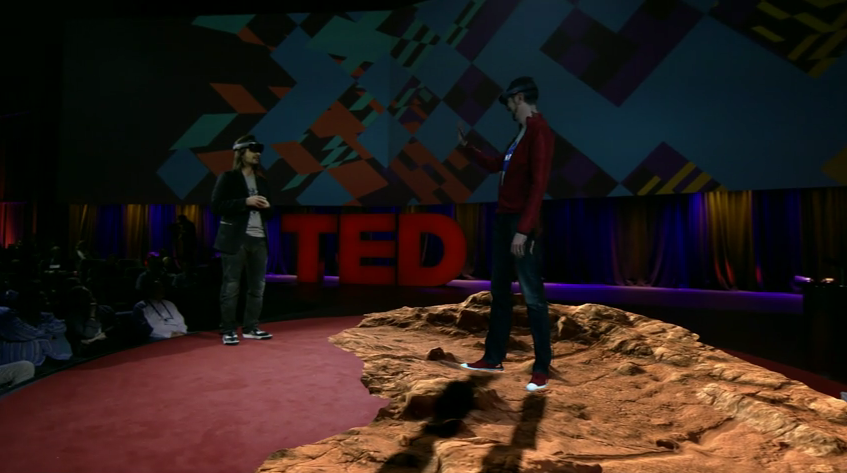 NEWS
NEWS
 NEWS
NEWS
 NEWS
NEWS
Microsoft’s research division has developed a new kind of 3D video capture system it’s calling “holoportation”, which allows people to be ‘rendered’ in 3D inside any environment. You can think of it as a kind of inverse “holodeck”, as seen in the famous Star Trek TV series.
Microsoft Research’s Interactive 3D Technologies group released a video of the technology in action on YouTube at the weekend, showing a number of people ‘appearing’ in a room with its research manager Shahram Izadi, despite being recorded in a separate room.
In order to render holographs of people, the system relies on a specialized capture rig that’s able to record people in 3D and capture their movements in real-time. It then sends a 3D image of the person it captures to a second person (Izadi, in Microsoft’s example video) who is wearing a HoloLens, making it appear to the wearer as if they’re in the same room.
They’re not, of course, and that can be ascertained from the fact that several key parts of human interaction are still missing. The most obvious one is that holoportation users can’t touch each other – in fact, they’ll walk right through each other if they try to embrace. The HoloLen’s field of view is also restricted, so the wearer can only see their friend through a rectangular window in the center of their vision. As such, those who holoport into the conversation might appear to be floating in midair, though we can’t tell for sure without trying it out ourselves.
Alex Kipman, who’s leading the development of Microsoft’s HoloLens, first showed off the holoportation capabilities in an appearance at the TED conference in Vancouver last month. There, he was joined by a holographic representation of NASA scientist Jeff Norris, who discussed with him the potential uses of HoloLens in the field of scientific research.
Another obvious use of holoportation technology would be in the business world. The technology could theoretically allows several people at once to ‘holoport’ to their company’s headquarters in order to remotely attend a meeting, for example. Those ‘holoporting’ in would also be able to talk to other holoporters, who’re physically located elsewhere. This is an interesting potential use case that could help sell the idea of HoloLenes and virtual reality to businesses, when the technology goes on sale.
Whether it actually will go on sale remains to be seen however. Microsoft is only just now getting ready to send out its first wave of HoloLens developer kits, and the special recording equipment needed to record people in 3D isn’t exactly cheap, so it may well be several years before holoportation becomes commonplace, if at all.
Still, Microsoft is set to host its BUILD developer conference in San Francisco next week, so we can expect to see more HoloLens-related news then.
Support our mission to keep content open and free by engaging with theCUBE community. Join theCUBE’s Alumni Trust Network, where technology leaders connect, share intelligence and create opportunities.
Founded by tech visionaries John Furrier and Dave Vellante, SiliconANGLE Media has built a dynamic ecosystem of industry-leading digital media brands that reach 15+ million elite tech professionals. Our new proprietary theCUBE AI Video Cloud is breaking ground in audience interaction, leveraging theCUBEai.com neural network to help technology companies make data-driven decisions and stay at the forefront of industry conversations.